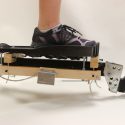All NIH human embryonic stem cell registry lines now deposited at NSCB
The U.S. National Stem Cell Bank (NSCB) has announced that it has received deposits of two human embryonic stem cell lines from Cellartis AB, a biotechnology company based in Sweden. With the addition of the new lines, the National Stem Cell Bank now has received all 21 cell lines from the six providers listed on the National Institutes of Health (NIH) federal registry.
Currently, 16 of these lines have completed the NSCB’s extensive quality control process and are available for distribution to research scientists around the world. The NSCB’s initial testing process, which can take several months or longer to finalize, begins upon receipt of a new cell line and is carried out to ensure the identity of the cell line, cell characteristics and that the starting cell material is free from contaminants.
The NIH established the country’s first National Stem Cell Bank at the WiCell Research Institute, a private, nonprofit supporting organization to the University of Wisconsin–Madison, in September 2005. Its mission is to obtain, characterize and distribute the 21 human embryonic stem cell lines that currently may be used in U.S. federally funded research. All six providers of the NIH-registry stem cell lines — WiCell at UW–Madison, University of California, San Francisco, and Novocell in the U.S.; ES Cell International (ESI) in Singapore; Technion in Israel; and Cellartis in Sweden — were invited to deposit their cells by the NSCB shortly after it was established.
Derek Hei, a UW–Madison researcher and leader of the NSCB, says the availability of a variety of human embryonic stem cell lines for study is critical to advancing the field. “The addition of the Cellartis lines to the National Stem Cell Bank is extremely important because now we’ll be able to distribute these lines to the worldwide research community,” he says. “We’ll also be able to generate data unique to these lines that is valuable to the advancement of stem cell research.”
Mats Lundwall, CEO of Cellartis, says, “We are delighted to have this collaboration with the U.S. National Stem Cell Bank that will increase the amount of NIH eligible lines readily available in the U.S. The Cellartis cell lines are among the most extensively characterized in the world and now their distribution within the U.S. has been further facilitated through this partnership.”
In addition, the host organization for the NSCB, the WiCell Research Institute, recently began its own bank, the WiCell International Stem Cell (WISC) Bank, to study and distribute stem cells that currently cannot be offered through its current contract with the NIH. “Due to the NSCB’s deposits of all 21 NIH-registry lines and WiCell’s ability to offer induced pluripotent and other stem cells through our new WISC Bank, our facility provides a tested operation with experienced staff that is a unique source for stem cell researchers worldwide,” says Erik Forsberg, executive director of WiCell.
WiCell researchers are working to characterize the cells in the National Stem Cell Bank to support the development of human embryonic stem cells for research and therapeutic applications. Their efforts include trying to understand how each cell line behaves under different conditions in the laboratory, testing the cells for potential pathogens and assessing their potential to become specific tissues, such as heart, neuronal or insulin-producing islet cells. The results of these studies and tests are made available to the scientific community on the National Stem Cell Bank Web site.
Scientists from nonprofit and academic institutions anywhere in the world can request the human embryonic stem cell lines deposited in the bank. The site provides research protocols and in-depth information on specific cell lines. The NIH Registry Lines available through the National Stem Cell Bank are priced at an affordable $500 per two vials, which contain approximately six million cells capable of establishing multiple new colonies.
The WiCell Research Institute, founded in 1999, is dedicated to expanding the frontiers of science and medicine by unlocking the potential of stem cells. As a private, nonprofit supporting organization of UW–Madison, WiCell conducts research, supports research at UW–Madison, hosts the National Stem Cell Bank and the WISC Bank, provides training for scientists and offers educational outreach programs for K-12 students and the community.
WiCell has provided free human embryonic stem cell licenses to more than 500 researchers in 32 countries and 42 states. WiCell offers an ongoing schedule of stem cell training classes and workshops customized for participants ranging from youth to non-technical adults to lab technicians to top researchers. Since 2002, WiCell has trained more than 600 individuals in stem cell technologies and methodologies.
Cellartis AB is a premier provider of human embryonic stem cell (hES)-derived products and technologies that will drive unprecedented innovation in drug discovery and regenerative medicine today and in the future. Today, alongside fully characterized, ethically derived human embryonic stem cell lines, the company offers custom-prepared human cardiomyocytes and mesenchymal progenitors derived from hES cells along with stem cell antibodies and tools. Cellartis is engaged in programs for the production of homogenous populations of hepatocytes suitable for use as bio-tools in industrial applications. In addition, Cellartis has built the world’s first large-volume automated production facility for human ES cells and can provide human ES cells for screening campaigns. The company was founded in 2001, has more than 50 employees and is located in Gothenburg, Sweden and Dundee, Scotland/UK. For more information, e-mail info@cellartis.com.


